Common Resin Problems [And Fixes]
Hey there, resin crafters! If you’ve ever found yourself knee-deep in a mesmerizing resin project only to encounter unexpected hiccups, you’re not alone. We are coving resin problems.
Crafting with resin can be a rewarding adventure, but it’s not always smooth sailing. Fear not! This blog is your trusty companion on the resin journey, here to help with those common resin problems that can sometimes leave us scratching our heads.

This troubleshooting guide is designed with you in mind. Let’s tackle those resin roadblocks together. Say goodbye to frustration and hello to flawless resin creations!
So, grab your crafting gear, and let’s dive into the nitty-gritty of resin problem-solving. Your next stunning creation is just a solution away! 🌟✨
Common Resin Problems
1. Resin Is Not Curing
Encountering the frustration of uncured epoxy resin can throw a wrench into the excitement of crafting. Several factors could contribute to this issue, including inaccurate resin-to-hardener ratios, insufficient mixing, or improper environmental conditions.
Fix: The fix for uncured resin often involves assessing the root cause. First, double-check the resin and hardener proportions, ensuring they are accurately measured.
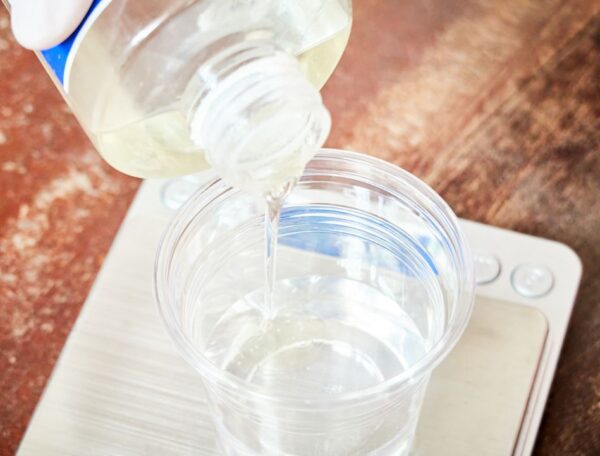
Additionally, thoroughly mix the components, making sure to scrape the sides and bottom of the mixing container to incorporate all elements evenly. If environmental conditions are affecting the curing process, such as low temperatures, try moving the project to a warmer area.
If you are constantly having troubles with your resin not curing properly, read this article about the top reasons why your resin is not curing properly. We go into the main reasons in more details.
2. Resin Is Yellowing
Yellowing is a common concern with epoxy resin, and it occurs as a result of prolonged exposure to UV light. When resin is subjected to sunlight or other sources of ultraviolet radiation, a chemical reaction takes place within the material, causing it to gradually adopt a yellowish tint.
This process can compromise the clarity of the resin, altering its original transparent or translucent appearance. The impact of yellowing varies depending on the type and quality of the resin used, as well as the duration and intensity of UV exposure.

Fix: To mitigate yellowing, crafters often opt for UV-resistant resin or UV-stabilized epoxy resins, and they may also choose to store or display their finished projects away from direct sunlight to preserve the resin’s aesthetic appeal over time.
We go into depth about this problem in our complete guide: Why resin is yellowing and how to fit it.
3. Resin Is Getting Hot
Overheating poses a potential pitfall in the world of epoxy resin crafting, primarily when an abundance of heat is applied, such as through the use of a heat gun or other heat sources. During the curing process, resin will also heat up.
The consequence of this excessive heat is accelerated curing of the resin.
This may introduce unwanted complications like the formation of bubbles within the resin and wreaking the smooth finish desired for projects.
Furthermore, overheating may compromise the structural integrity of the cured resin, potentially leading to cracking or other deformities.
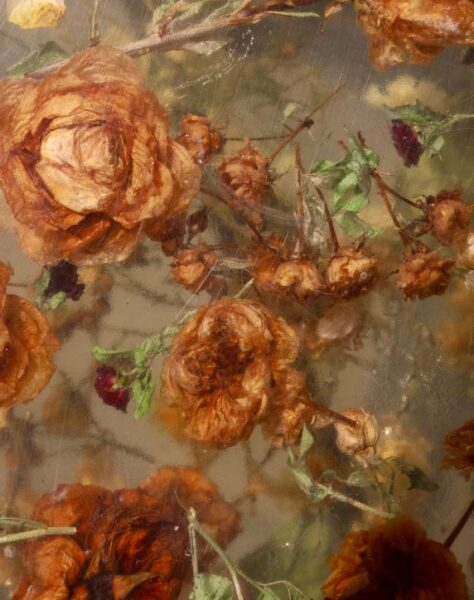
Fix: Turn off any heat guns or other heating devices, and allow the resin to cool down naturally. If possible, move the project to a cooler environment to facilitate this process.
It’s essential to monitor the resin closely and ensure it doesn’t reach a temperature that could lead to irreversible damage.
Resin getting too hot can cause all kinds of problems and we go over the top 10 reasons why resin is getting hot to help you troubleshoot this problem and fix it.
4. Resin has Imperfections
Epoxy resin, despite its transformative and glossy allure, is susceptible to imperfections that can crop up during the crafting process.
These imperfections often manifest as tiny bumps, uneven surfaces, or irregularities, and they can result from factors such as dust particles settling onto the resin as it cures, incomplete mixing, or rapid temperature changes.

Fix: The good news is that many of these imperfections can be remedied with a bit of sanding finesse. Sanding not only smoothens the surface but also helps eliminate any irregularities, providing a clean canvas for a flawless finish.
It’s crucial to start with a lower grit sandpaper to address prominent imperfections and then progressively move to higher grits for a finer finish.
To learn how to fix imperfections in resin, we go over helpful tips in our article about how to sand epoxy resin.
5. Resin Is Causing Paper Colors To Bleed
Discovering that resin is causing paper to bleed underneath can be disheartening, especially when making photo pendant resin jewelry.
This issue arises when the resin penetrates the paper, causing inks or colors to spread and blur. The quick fix involves taking preventative measures by sealing the paper before applying resin.
Fix: For future projects, a proactive solution is to seal the paper before applying resin. Use a clear sealant or mod podge on both sides of the paper and allow it to dry thoroughly before incorporating it into your resin project.
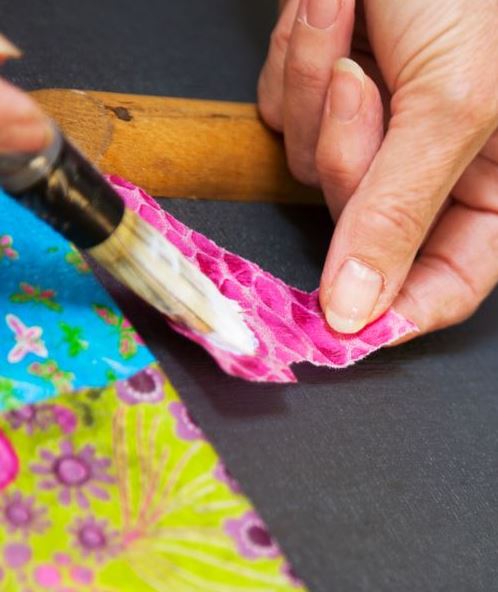
This pre-sealing process creates a protective barrier, preventing the resin from penetrating the paper and causing bleeding. Our article about how to properly seal paper for resin goes through everything you need to know.
6. Resin Is Cloudy
Encountering cloudiness in cured resin can be a perplexing setback, often stemming from inadequate mixing or exposure to moisture during the curing process.
The cloudy appearance arises when the resin components haven’t been thoroughly combined, creating a less-than-transparent finish.

Fix: To remedy this issue, the key is to ensure meticulous mixing. When preparing your resin, take the time to stir the components thoroughly, scraping the sides and bottom of the mixing container to incorporate them evenly.
Additionally, work in a dry and controlled environment to minimize the risk of moisture interference during the curing stage.
There are many reason on why your resin is cloudy or turned opaque and we discuss it all in this article why resin is cloudy and how to fix it.
7. Resin Has Seized
Experiencing resin that has seized can be a frustrating roadblock in your crafting journey. Seizing occurs when the resin and hardener react unexpectedly, leading to a thickened, lumpy mixture that is challenging to work with.
Fix: To address this issue, the first step is to remain calm and avoid the temptation to force the mixture, as this can exacerbate the problem.
Instead, try to identify the cause by checking the resin-to-hardener ratio, ensuring accurate measurements. If the proportions are off, attempt to adjust them according to the product’s guidelines.
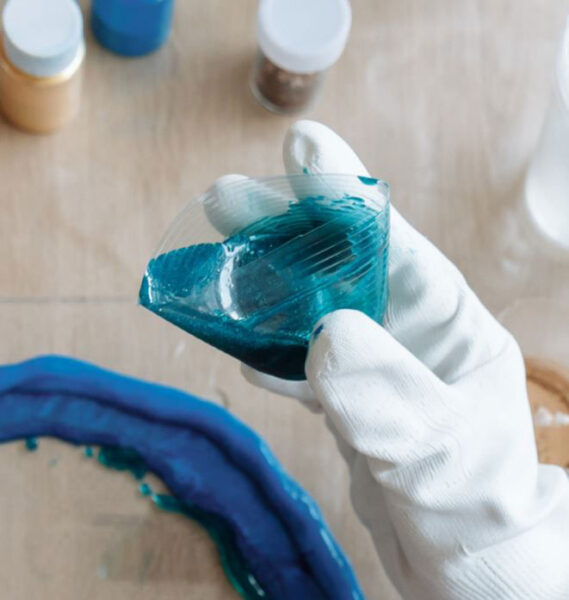
If seizing persists, consult the manufacturer’s instructions or contact their customer support for tailored advice. In some cases, you might need to check to see if the resin has expired.
The importance of precise measurements and proper handling to prevent this issue in future resin projects especially when adding the proper amounts of colorants to resin.
8. Resin Flowers Have Turned Moldy
Discovering mold on resin flowers can be disheartening, and it typically occurs when moisture is trapped during the curing process. Never use fresh flowers in resin.
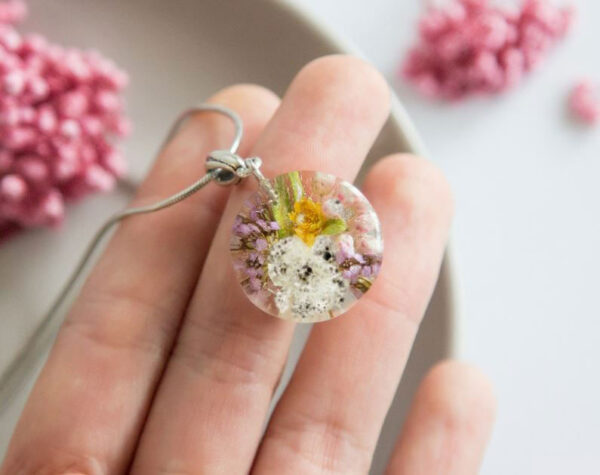
Fix: While you cannot fix cured resin, you can make sure not to make the same mistakes next time. Allow the flowers to thoroughly dry before putting them into resin.
We go over all of the proper ways to dry flowers for resin. And if you don’t want to dry them yourself, here are the best dried flower kits for resin that are often used here.
We created a pendant using fresh flowers encased in resin, doing some testing. About 4 months later, we noticed something – mold had started growing inside the pendant.
So it’s super important to make sure your flowers are completely dried. Especially if you are doing a business on preserving wedding flowers.
9. Resin Is Full Of Bubbles
Discovering that your resin is full of bubbles can be a common challenge, but there are effective ways to address this issue.
Fix: Firstly, prevention is key, so make sure to mix the resin and hardener thoroughly but without introducing additional air. Slow and steady is best and try not to lift the stirring stick out of the resin while stirring.
Pour the mixture slowly to minimize air entrapment and consider using a heat gun or torch to remove bubbles after pouring.

If bubbles persist, you might just have to keep checking on your piece, popping the bubbles as they rise to the surface.
Alternatively, tapping the sides of the container or gently stirring with a toothpick can help release trapped air. Our guide on how to remove bubbles in resin has expert tips.
10. Resin Has Dimples
Discovering dimples in your cured resin projects can be a common frustration, often stemming from factors like incomplete mixing, uneven pouring, or environmental conditions during curing.
Fix: To remedy dimples, consider sanding the affected areas with fine-grit sandpaper, starting with a lower grit and progressing to higher grits for a smoother finish.

When working on future projects, ensure thorough mixing, pour the resin evenly, and create a controlled curing environment to minimize the risk of dimples. Read about how to fix resin dimples.
11. Resin Adhesion Problems
When you’re working with resin, one common hiccup is adhesion problems, where the resin doesn’t stick well to certain surfaces, causing issues like delamination or weak bonding.
Fix: Make sure the surfaces are squeaky clean, thoroughly dried, and properly prepped before applying the resin.
If you’re still facing adhesion woes, think about using primers or adhesion promoters as suggested by the manufacturer – they can be real game-changers in getting that solid bond you’re aiming for.
Check the list of the top surfaces resin will not stick to.
13. Can’t Get Resin Out Of Molds
If you find yourself struggling to remove cured resin from molds, the issue likely lies in inadequate mold preparation or you are using the wrong molds.
Fix: Gently flexing or tapping the molds and, if necessary, using a soft tool to pry the edges can aid in releasing the resin without damaging the mold or the cast piece. Read our article about how to release resin from molds without wreaking them.
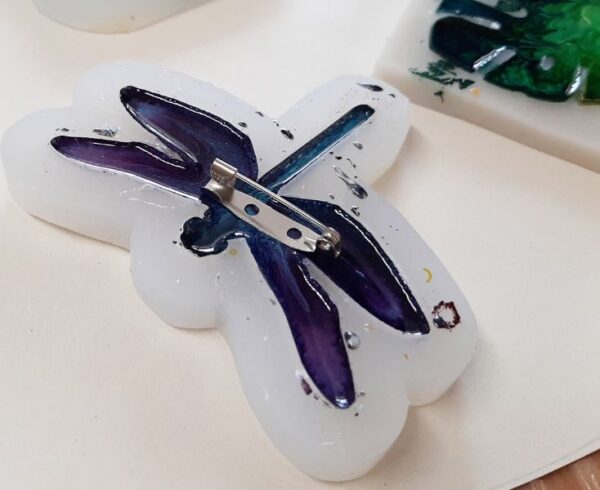
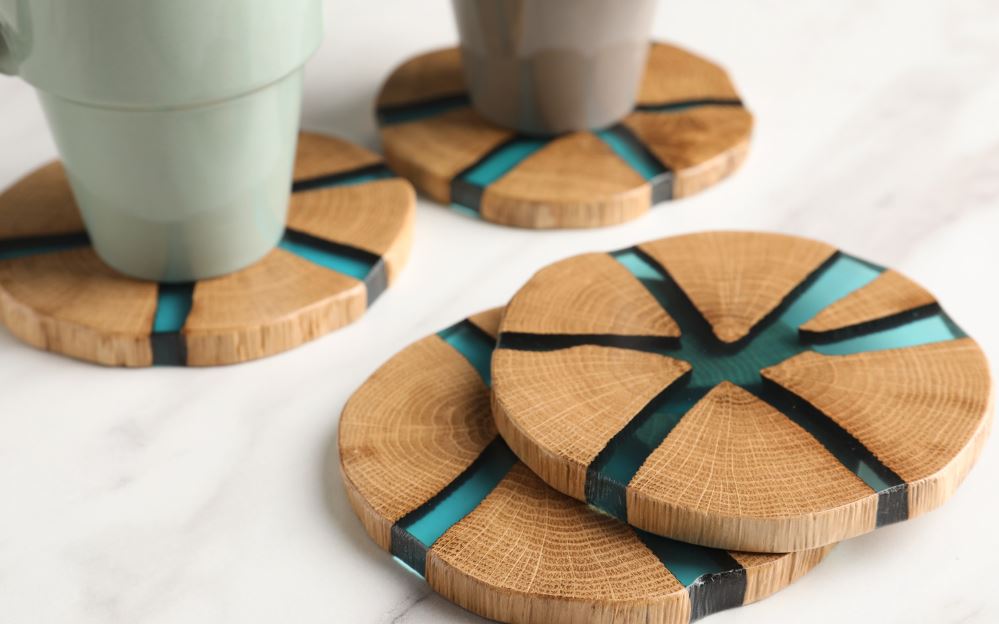
We are Resin Crafters Just Like You
If You Are New To Using Resin Read This Guide:
✓ 25 Must Know Tips When Working With Resin
Thank you for taking the time to explore these insights into common resin challenges. We hope these tips prove valuable in your crafting adventures, helping you overcome hurdles and achieve stunning results.
Crafting with resin can be a rewarding journey, and with a bit of know-how, you can turn obstacles into opportunities for creative growth. If you have any questions or need further assistance, feel free to reach out.
Happy crafting, and may your resin projects be filled with endless inspiration and success!

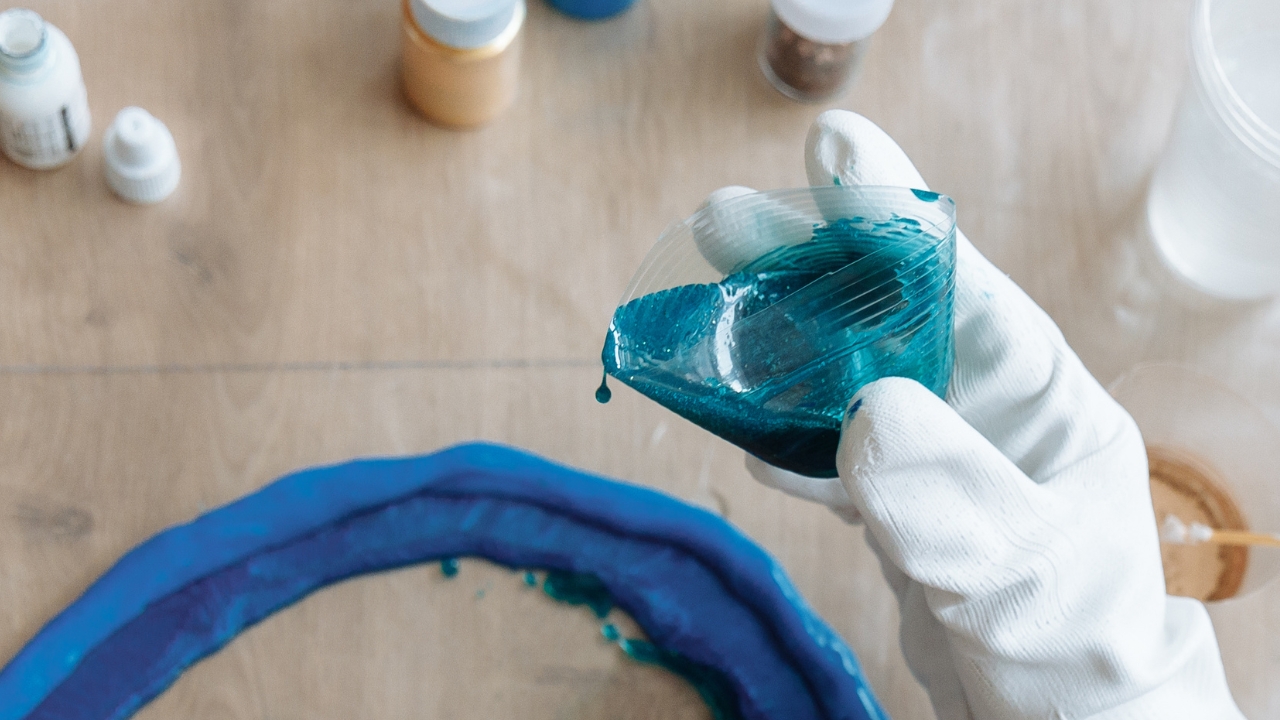

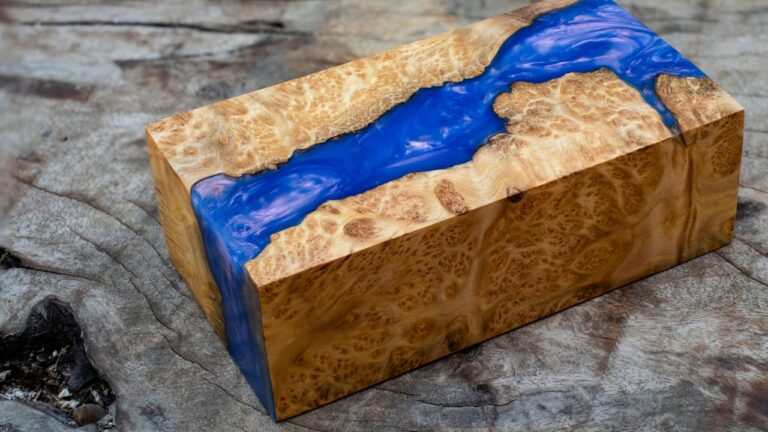
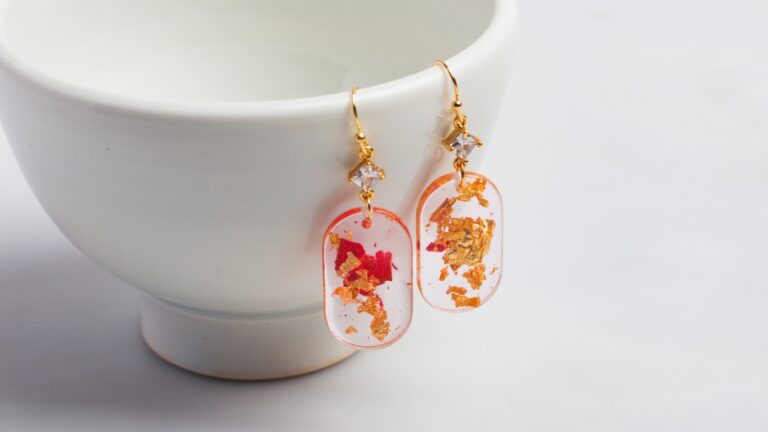
![13 Unique Handmade RESIN WOOD ART [2024]](https://craftydiyartistry.com/wp-content/uploads/2023/11/best-resin-wood-art-cover-768x432.jpg)
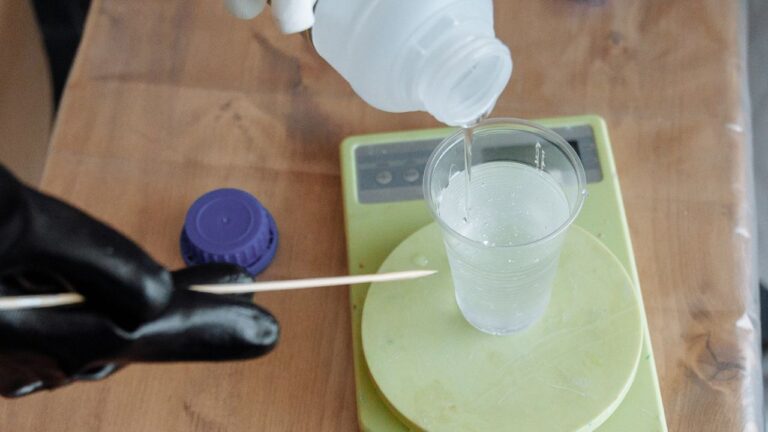
![13 Best MICA POWDER Kits for RESIN [2024]](https://craftydiyartistry.com/wp-content/uploads/2023/10/best-mica-for-resin-cover-768x432.jpg)